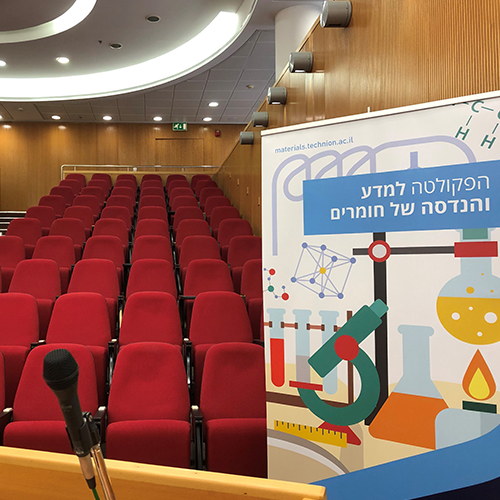
Dr. Lee A Burton
21/11/2024
David Wang Auditorium, 3rd floor Dalia Meidan Bldg.
14:30
Electrides are rare ionic compounds in which an electron does not occupy an atomic orbital but exists as a free electron in a cavity of the crystal lattice. This electron behaves differently to those occupying the valence state of standard materials, making electrides desirable as electron emitters,[1] nonlinear optical switches,[2] superconductors,[3] battery anodes,[4] and catalysts for applications ranging from organic synthesis to CO2 splitting.[5] An electride catalyst has even been shown to significantly improve the efficiency of the century-old Haber-Bosch process recently.[6] We use high-throughput screening and density functional theory calculations to identify undiscovered electrides among all known materials.[7] Our method recovers the compounds Ba3CrN3 and Sr3CrN3 as electrides. These ternary nitrides are the first known case of electrides containing a transition metal element, which is surprising as one would expect a redox active element to accept the anionic electron rather than allowing its existence in the lattice. We confirm these results with single crystal experiment, validating our method and approach. [8] Besides these compounds we find more than 60 previously unknown electrides along with 4 already known, significantly expanding this class of industry-relevant materials.
[1] Huang, R. H. et al. Chem. Phys. Lett. 1990, 166 (2), 133
[2] He, H.-M et al. J. Phys. Chem. C 2017, 121 (1), 958
[3] Hosono, H et al. Philos. Trans. R. Soc. London A Math. Phys. Eng. Sci. 2015, 373, 2037
[4] Hu, J. et al. ACS Appl. Mater. Interfaces 2015, 7 (43), 24016
[5] Ye, T.-N. et al. Green Chem. 2017, 19 (3), 749
[6] Masaaki K. et al. Nature Comms. 2015, 6731
[7] Burton L. et al. Chem Mater. 2018, 30 (21), 7521
[8] Chanhom P. et al. J.A.C.S. 2019, 141, 10595
Host: Asst. Prof. Yonatan Calahorra


